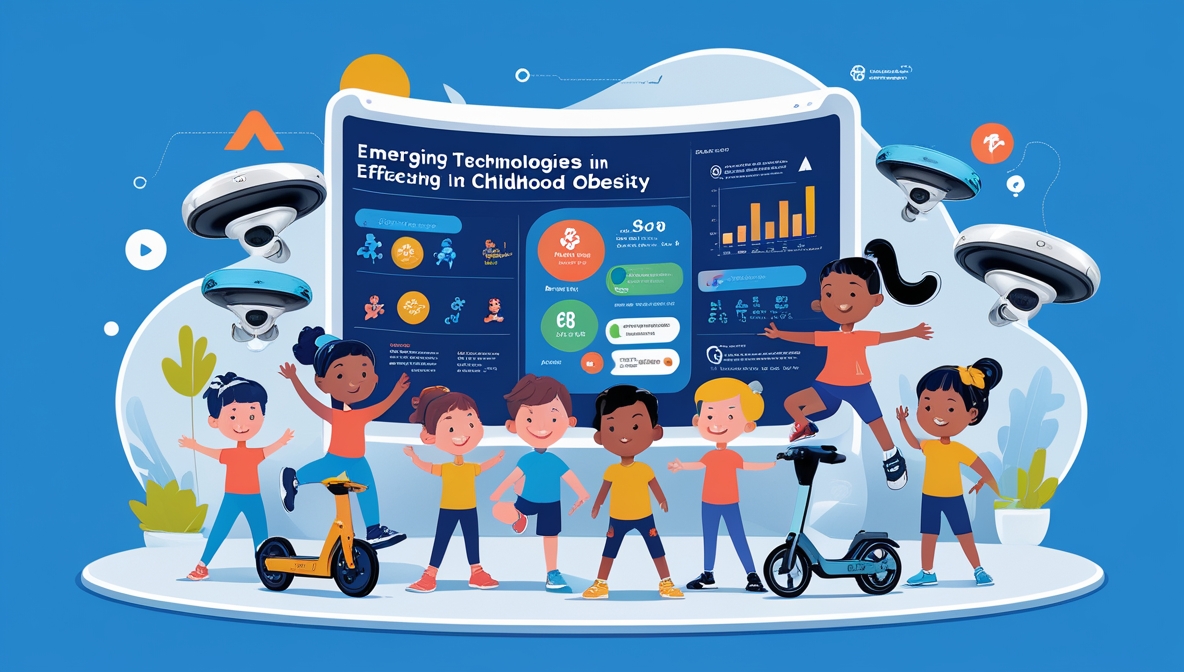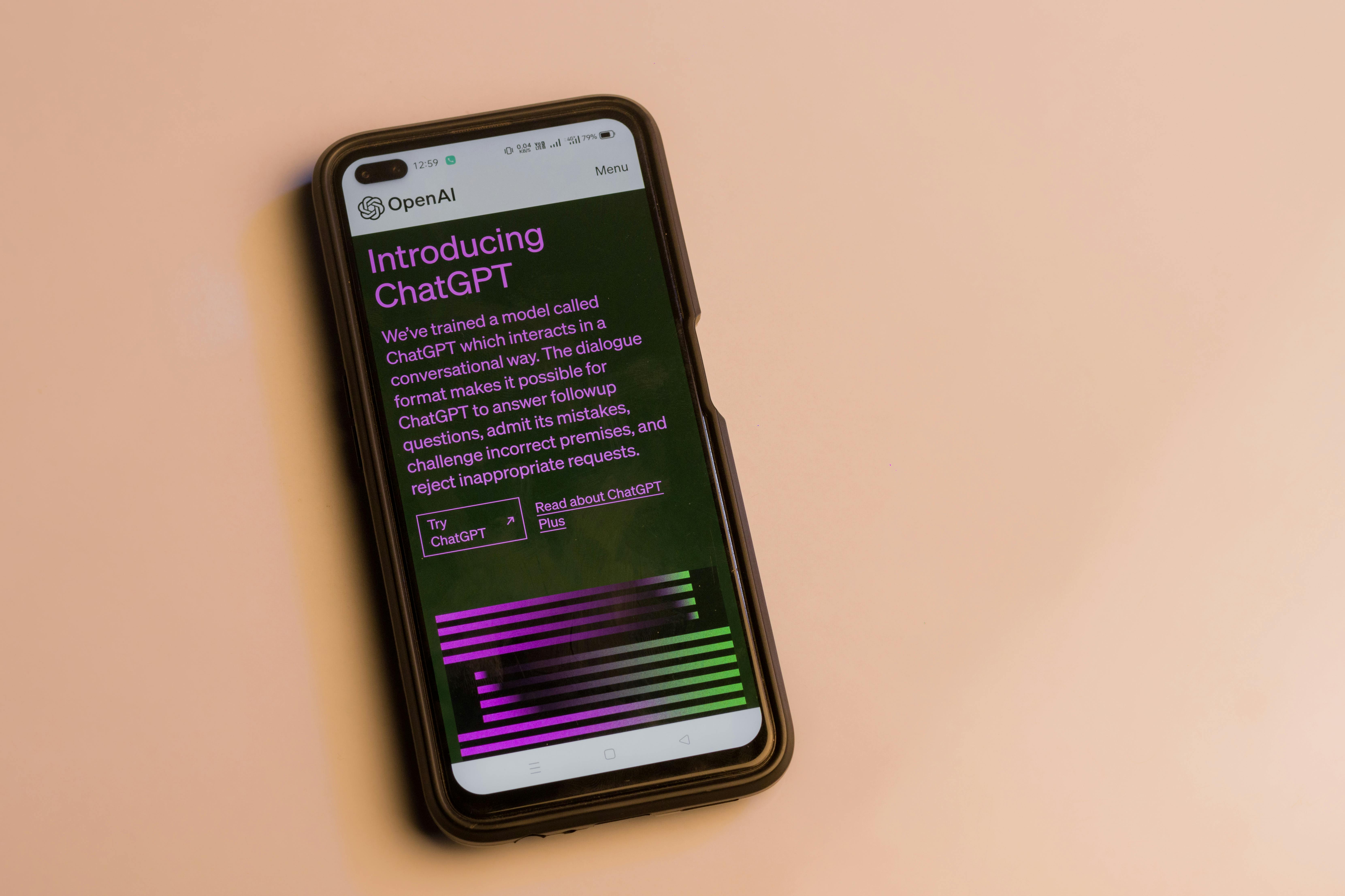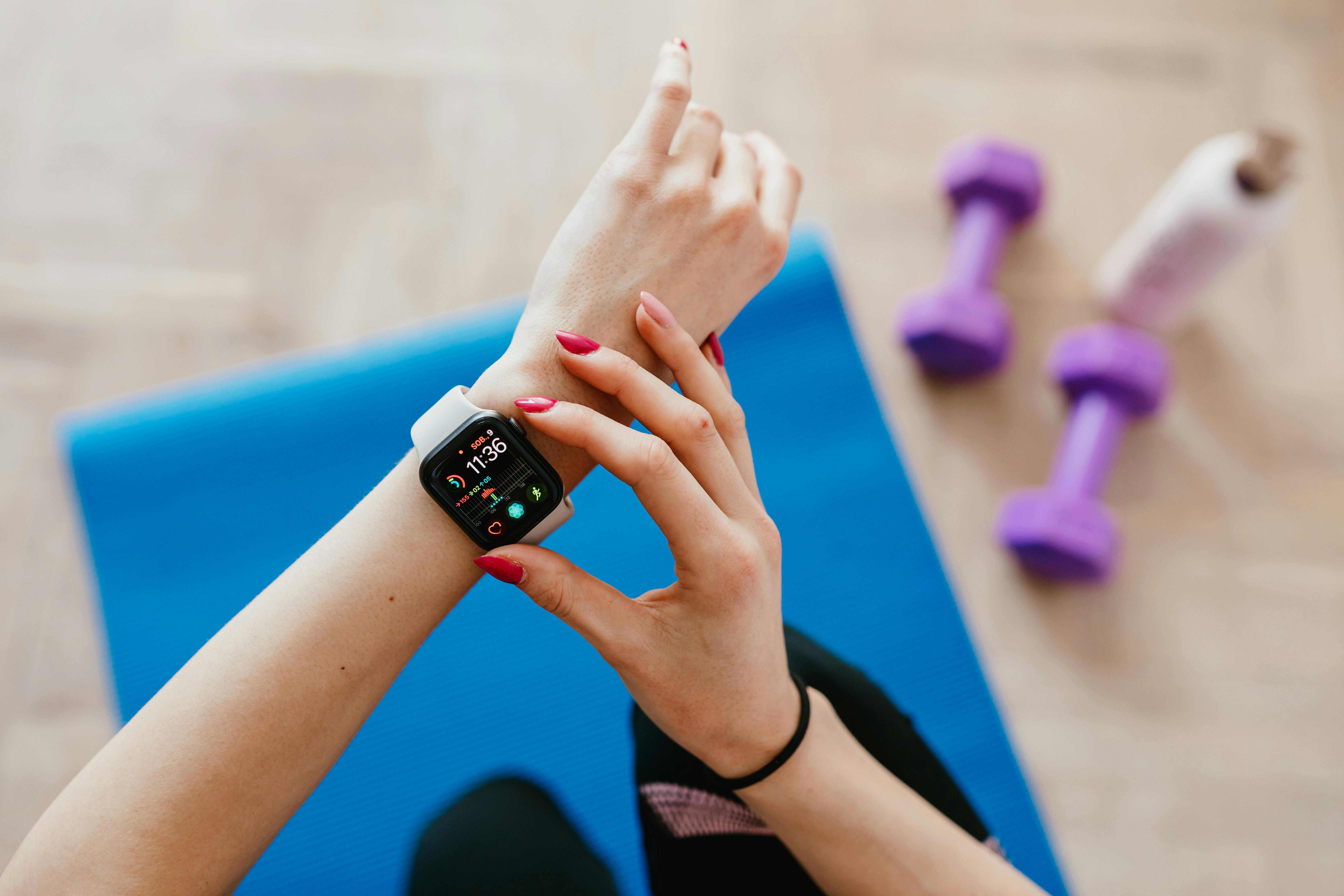
Childhood obesity is a growing concern worldwide, affecting millions of kids and their long-term health. Technology now offers innovative ways to address this issue, from fitness apps to smart wearables. But do these solutions actually work? Understanding the efficacy of emerging technologies to manage childhood obesity is crucial. This post explores how these tools are reshaping health management and whether they truly help kids lead healthier lives.
Understanding Childhood Obesity
Childhood obesity is not just a personal concern—it’s a global epidemic. With rates climbing steadily, it has profound implications for children’s physical and mental health. Understanding the scale and consequences of this issue is essential to addressing the problem effectively.
Current Statistics on Childhood Obesity
Childhood obesity has become a pressing issue worldwide. Globally, over 390 million children and adolescents aged 5–19 were classified as overweight by 2022, with 160 million living with obesity, according to the World Health Organization. Projections indicate that by 2025, this number could rise significantly, potentially impacting 205.5 million children in this age range, as detailed in the World Obesity Federation Report.
On a national scale, the United States reveals concerning numbers. The Centers for Disease Control and Prevention (CDC) noted that 19.7% of U.S. children and adolescents (approximately 14.7 million) were classified as obese in 2023. These numbers indicate significant disparities by geography, socioeconomic status, and race, creating an urgent need for targeted interventions.
What does this mean? Without effective strategies, including the efficacy of emerging technologies to manage childhood obesity, the problem will likely escalate.

Photo by Towfiqu barbhuiya
Health Consequences of Childhood Obesity
The health risks of childhood obesity are profound, extending far beyond aesthetics or fitness levels. It creates a domino effect of health complications, both short-term and long-term.
Short-Term Health Impacts
Children with obesity are more likely to deal with:
- Type 2 diabetes: Increased blood sugar levels can emerge early, creating a lifelong challenge (source).
- High blood pressure: Unusual in kids, yet common among those with obesity (source).
- Sleep apnea: Interrupted breathing during sleep due to excess weight (source).
Long-Term Health Risks
Chronic conditions, typically seen in adults, are creeping into younger populations due to obesity. These include:
- Heart disease: Elevated cholesterol and blood pressure set the stage for cardiac issues (CDC).
- Mental health struggles: Obesity significantly increases risks for depression, anxiety, and low self-esteem (Mayo Clinic).
- Liver and kidney disease: Non-alcoholic fatty liver disease is increasingly diagnosed in children with obesity.
Why does this matter? This growing list of health problems highlights that childhood obesity isn’t just a phase kids will “grow out of”—it’s a serious health condition demanding immediate solutions.
By leveraging data, insights, and innovation like emerging technologies, there’s hope for turning these grim statistics around.
Emerging Technologies Overview
Emerging technologies are reshaping the way we tackle childhood obesity. By combining innovation with practicality, these tools provide new ways to address an old problem. From mobile apps that track fitness to artificial intelligence that personalizes interventions, technology has become a key player in managing childhood obesity. But how do these technologies work, and how effective are they?
Types of Emerging Technologies
In the fight against childhood obesity, various technologies are making waves. Let’s break down the most prominent ones:
- Mobile Applications: Fitness and nutrition apps are empowering families to monitor meals, activity, and progress. Apps like MyFitnessPal and others help users set daily goals, track caloric intake, and stay engaged with healthy habits (source). These apps make health management easy to access and integrate into daily life.
- Wearable Devices: Wearables like Fitbit or Apple Watch are not just for adults. These devices track heart rate, steps, and even sleep quality, making kids more aware of their activity levels (source). Gamified incentives on some of these devices also encourage consistent activity.
- Telemedicine: Virtual consultations with pediatricians and dietitians have simplified access to expert advice. Families no longer need to leave home for routine checkups or weight-loss counseling, which is particularly beneficial for under-resourced areas (source).
- Artificial Intelligence: AI systems analyze behavioral data, predict risks, and recommend tailored interventions. AI-driven systems are helping healthcare providers identify at-risk children early, offering solutions before complications arise. Studies reveal AI’s potential in improving long-term weight management outcomes (source).
These technologies act like a multi-tool, each component serving a specific yet interconnected purpose in addressing the efficacy of emerging technologies to manage childhood obesity.

Photo by Sanket Mishra
Role of Data Analytics
How does data analytics shape our approach to combating childhood obesity? For starters, it equips us with actionable insights. Here’s how:
- Customized Interventions: Big data enables the design of personalized treatment plans based on a child’s specific needs and lifestyle. It ensures the right solution for the right individual (source).
- Behavioral Trends: Analytics track and study eating and activity habits, offering a window into what triggers unhealthy behavior. Early identification of these patterns prevents long-term issues (source).
- Predictive Modeling: Data from wearables, apps, and healthcare systems can predict future obesity risks. For example, algorithms monitor fluctuations in lifestyle and alert parents or healthcare providers to potential concerns (source).
- Community-Level Solutions: Beyond individual use, big data helps identify obesity trends within communities. This kind of information assists public health officials in crafting large-scale programs, targeting high-risk areas (source).
Think of data analytics as the navigator, guiding decisions with precision and helping to uncover connections between behavior and health that were once invisible.
By integrating these technologies and leveraging data-driven insights, we’re one step closer to changing the narrative on childhood obesity.
Efficacy of Mobile Health Applications
Mobile health applications (mHealth apps) have emerged as promising tools in the battle against childhood obesity. These digital interventions offer accessible ways to monitor physical activity, diet, and overall health, empowering families to make sustainable changes. But how effective are they really? Let’s explore real-world examples and the challenges they face.
Case Studies of Successful Apps
Studies demonstrate that certain mobile health apps have achieved measurable success in managing childhood obesity. Their user-friendly features and evidence-based strategies make them standout tools in promoting healthier habits.
- Kurbo by WW: This app focuses on a traffic-light system to categorize foods as green (healthy), yellow (eat in moderation), or red (limit intake). A 2022 study found that children using Kurbo showed significant improvements in BMI and self-control over their diets (source).
- Zamzee: Designed for kids, this app pairs with a wearable activity tracker to turn exercise into a game. Children earn points for physical activities, which they can redeem for rewards. Research highlights a significant increase in activity levels among users (source).
- Health-e-Pals: This interactive app uses AI to recommend tailored physical activities and meal plans for children based on their specific health data. A six-month study revealed consistent reductions in user BMI and notable engagement with personalized content (source).
These apps don’t just educate—they actively engage kids and families in ways that feel less like a chore and more like a fun challenge.

Photo by Tima Miroshnichenko
Challenges and Limitations
Despite their potential, mHealth apps face several hurdles that limit their effectiveness, particularly in reaching diverse populations.
- Accessibility Issues: Many underserved communities experience barriers to accessing these apps. Limited smartphone availability, low digital literacy, and inconsistent internet connectivity often prevent families from utilizing digital health tools (source).
- Cultural Sensitivity: Apps are not always designed with diverse users in mind. A lack of culturally relevant dietary suggestions or activity recommendations can alienate certain groups, reducing adoption and long-term engagement (source).
- Data Privacy Concerns: Parents often hesitate to use apps that require detailed personal or health information due to fears of data breaches or misuse (source).
- Limitations in Personalization: While some apps incorporate AI to tailor recommendations, many still lack nuanced adjustments for individual needs, such as age-specific activities or chronic conditions (source).
While these challenges exist, overcoming them could significantly enhance the efficacy of mobile health applications in managing childhood obesity. Building tools that are inclusive, secure, and intuitive is essential for wider impact.
Wearable Technology in Childhood Obesity Management
The rise of wearable technology offers fresh pathways to manage childhood obesity. These devices, ranging from fitness bands to smartwatches, allow kids to engage with their health in interactive and empowering ways. But how do wearables measure up in terms of effectiveness? Let’s unpack their impact.
Impact on Physical Activity Levels
Wearable tech brings a more active lifestyle within reach for children, especially those dealing with obesity. Incorporating step counts, activity reminders, and even gamified exercise routines, these gadgets make moving fun and measurable.
Researchers have found notable increases in daily physical activity among children using wearable devices. A systematic review shows wearables significantly improve step counts and aerobic activity levels. For instance, a 2023 study published in MDPI revealed that commercial fitness trackers, when paired with supporting apps, provided clear boosts to physical activity in children.
Why does this work? Wearables offer immediate feedback, much like a scoreboard in a game. The combined use of data insights and real-time nudges motivates kids to move more, whether by walking extra steps or participating in dynamic play. According to research highlighted in the Journal of Medical Internet Research, wearable systems encourage consistent physical activity—crucial for long-term health benefits.
These devices also assist parents and healthcare professionals in tailoring interventions. Motion tracking informs whether kids are meeting daily exercise goals, while trends in activity data help refine strategies to prevent sedentary habits. Excitingly, a review by Digital Health Global suggests that simply having access to wearable data prompts improvement, as awareness fosters accountability.

Photo by Kaboompics.com
Child Engagement and Motivation
Motivating children to form healthy habits can be challenging, but wearable technology has proven to be a powerful ally. By offering real-time rewards and personalized plans, wearables make health management feel less like a chore and more like a game.
From digital badges to interactive dashboards, gamification plays a critical role in keeping kids engaged. Studies, such as one reviewed in Healthier Generation, emphasize the creative ways wearables inspire healthy behavior. Devices provide kids with virtual rewards for reaching milestones—like completing a certain number of steps or drinking water throughout the day.
Wearables are particularly effective because they meet kids on their terms—offering instant gratification and visual progress tracking. Behavioral scientists suggest feedback loops foster habit formation. Consider this analogy: for a child using a wearable, hitting a daily step goal might feel the same as leveling up in their favorite video game.
Moreover, parent-child engagement improves with wearable technology. Parents can use apps synced with the device to monitor progress and celebrate achievements together. This not only reinforces positive behavior but also encourages family-level support for healthier living.
Research from Calcium Health concludes that engagement skyrockets when customization is added. For example, parents can select health goals that align with their child’s interests, such as biking or dancing. Even better, children are more inclined to stick to routines when these goals come with small, tangible rewards.
By bridging the gap between effort and reward, wearable technology transforms health goals into attainable, exciting challenges. These tools may not just help reduce obesity rates but also instill lifelong habits.
Telemedicine and Its Role in Obesity Treatment
Telemedicine, the use of digital platforms for delivering healthcare, has revolutionized access to medical services. For children struggling with obesity, telemedicine offers tailored, timely, and highly accessible solutions. These virtual interactions make healthcare more inclusive, removing traditional barriers like geography and time constraints.
Accessibility and Convenience of Telemedicine
Accessing quality healthcare can be a significant challenge for many families, especially those in rural or underserved areas. Telemedicine eliminates the need for physical travel, saving time, reducing stress, and making it easier for families to prioritize health.
Telemedicine has been particularly impactful in managing obesity. It brings specialized advice right into the comfort of your home. Need guidance from a pediatric nutritionist or fitness coach but live miles from the nearest clinic? A telemedicine appointment can happen instantly on your smartphone or laptop. For families balancing jam-packed schedules, this convenience means better follow-through with health plans.
Moreover, telemedicine has filled gaps in pediatric obesity care in areas where specialists were previously unavailable. A report by PMC notes that telehealth improves care availability for isolated communities while ensuring follow-ups happen regularly. For some families, this could mean the difference between ongoing support or dropping out of treatment entirely due to logistical barriers.
Another benefit is cost efficiency. Families often find that eliminating travel expenses and time off work makes obesity management more sustainable financially. The American Telemedicine Association emphasizes how telemedicine reduces unnecessary costs for both patients and healthcare systems, making care more affordable for all.
One example of this digital accessibility? Continuity in care post-COVID-19. Families who relied on virtual services during the pandemic continue to see its value, particularly when managing chronic conditions like obesity. They’ve discovered that regular video check-ins with a healthcare provider are just as effective as in-person visits.

Photo by Tima Miroshnichenko
Patient and Family Engagement
Childhood obesity is often a family challenge, not just an individual one. Telemedicine makes it easier to engage all family members in the treatment plan, which is essential for long-term success. Why? Because every home-cooked meal, grocery purchase, and lifestyle choice plays a role in a child’s health journey.
Through telemedicine platforms, doctors, dietitians, and counselors can educate families as a whole. Interactive sessions may include discussions on meal prepping or handling emotional eating triggers. Unlike quick office visits, virtual consultations allow families to access resources, revisit advice, and participate in group counseling from their living rooms.
Telemedicine also tailors solutions better. Family-friendly tools like apps integrated with telehealth platforms offer detailed meal planning, fitness suggestions, and behavior-tracking features. By directly involving kids and parents, these tools break down treatment plans into achievable steps. For example, screen-sharing applications during consultations let healthcare providers demonstrate portion sizes or workout routines visually, increasing clarity.
A study published in Obesity Action Coalition notes that virtual group sessions enhance emotional support among families. Parents exchange tips with others in similar situations, forming accountability networks and easing feelings of isolation. This shared responsibility often leads to better compliance with lifestyle modifications, which are crucial in treating childhood obesity.
Children themselves benefit too. Engaging, tech-based interventions like gamified virtual exercise routines turn abstract health goals into something relatable. When kids see their progress or receive rewards through digital platforms, they’re more likely to stay motivated—a win for both health professionals and families.
Telemedicine has become more than just a platform; it’s a bridge connecting healthcare providers with children and families in ways that were previously impossible. For parents juggling multiple responsibilities or for children resistant to in-clinic visits, this approach to obesity management presents a rare combination of flexibility and effectiveness. It’s not just about meeting everyone where they are physically but also meeting them emotionally and socially.
AI and Machine Learning in Childhood Obesity Management
As childhood obesity continues to present significant health challenges, artificial intelligence (AI) and machine learning (ML) are emerging as powerful tools in its management. These technologies offer advanced capabilities to predict trends, craft personalized strategies, and analyze data effectively, helping healthcare providers address obesity earlier and more efficiently.
Predictive Analytics for Health Interventions
Predictive analytics, powered by AI and ML, offers incredible potential to identify patterns, project trends, and enhance health interventions aimed at combating childhood obesity. By analyzing large datasets such as electronic health records (EHRs) and lifestyle data, predictive models can foresee obesity risks long before symptoms become visible.
Some AI engines now combine historical records with real-time data to create tailored strategies for children. For example, machine learning models like the one discussed in this study have been developed to predict childhood obesity risk using markers like age, family history, and other health indicators. These predictions allow doctors to recommend preventive interventions, such as adjusting physical activity levels or addressing dietary habits at an early stage.
A 2023 review published in PMC highlighted that machine learning techniques leveraging routine EHR data could improve clinicians’ ability to predict obesity risk. What makes AI so effective here is its ability to analyze vast amounts of data quickly and spot patterns a human might overlook. Whether it’s tracking a drop in physical activity or noting nutritional deficiencies, AI helps craft a detailed, forward-focused health blueprint for children.
Moreover, predictive analytics is proving essential at the community level. AI models can flag high-risk neighborhoods and help public health officials allocate resources effectively. Imagine preventative health campaigns targeting regions where socioeconomic factors correlate with higher obesity rates.
AI’s predictive power isn’t just about warnings—it’s about action. It provides caregivers and clinicians with insights to intervene earlier, offering comprehensive solutions that are as dynamic as the problem itself.
Success Stories in AI Integration
The integration of AI into childhood obesity management isn’t hypothetical; it’s already yielding real results. Several recent success stories illustrate the growing reliability and efficiency of these technologies.
- Risk Prediction Models in Clinical Practice: A cutting-edge ML-driven model was implemented in a pediatric hospital to identify children at risk of severe obesity by age 10. The system used EHRs to factor in genetics, socioeconomic parameters, and activity levels. A study featured in ScienceDirect found that early interventions based on these predictions reduced obesity incidence by 15% in targeted children.
- AI-Powered Dietary Apps: Applications using AI to help track children’s eating habits have also seen remarkable success. Apps like Health-e-Pals leverage AI to provide real-time feedback on food choices, promoting family engagement. Children using these AI-driven tools showed significant reductions in BMI after just six months, according to research from a study on AI applications in obesity.
- Telehealth Programs Enhanced by Machine Learning: Pediatric clinics have adopted telehealth systems with AI functionalities that monitor children’s progress remotely. For example, AI-based telemedicine platforms analyze live behavioral data to deliver advice on diet and physical activity. Studies such as one summarized in ScienceDirect have recorded effective BMI management in over 70% of participants engaged in such programs.
These success stories underscore how AI isn’t just a theoretical complement to traditional healthcare—it’s an essential force in reshaping how we approach childhood obesity. Its ability to predict, personalize, and optimize demonstrates immense promise for improving health outcomes on both individual and societal levels.

Photo by Pavel Danilyuk
By harnessing the power of predictive analytics and successfully incorporating AI into clinical settings, we’re already seeing tangible improvements in the battle against childhood obesity.
Key Takeaways
Emerging technologies offer promising solutions to manage childhood obesity but come with unique opportunities and challenges. As rates of childhood obesity continue to climb, leveraging these tools becomes all the more vital in providing effective, accessible, and personalized care. Here’s a summary of essential points:
Innovations Reshaping Obesity Management
Emerging technologies such as wearables, mobile health applications, telemedicine, and AI are fostering groundbreaking interventions in obesity prevention and treatment. These tools are designed to meet modern health demands by combining convenience with precision. For example:
- Wearable Devices: Fitness-oriented wearables track physical activity, heart rate, and sleep patterns, encouraging kids to stay active through gamification and real-time feedback (source).
- Mobile Apps: Applications simplify health tracking by offering goal-setting tools for food intake and activity levels, boosting family engagement.
- AI-Powered Solutions: Sophisticated models predict obesity risks based on behavioral and genetic data, enabling earlier action (source).
These innovations improve accessibility, providing parents and children with data-rich insights at their fingertips.

Photo by Tara Winstead
Evidence of Success
Several case studies highlight the measurable impacts of these technologies. For example:
- Behavior Changes with Encouragement: Kids using wearables or activity-tracking apps show higher levels of physical activity.
- BMI Reduction: Tailored interventions via mobile apps and AI platforms have led to consistent improvements in weight management.
- Improved Healthcare Access: Telemedicine removes location barriers, ensuring families can receive care from specialists without commuting (source).
These outcomes emphasize the advantages of tech-based approaches when managed responsibly.
Areas Needing Refinement
While promising, many technologies face limitations that must be overcome:
- Accessibility Barriers: Internet access and affordability can limit use in underserved communities.
- Diversity in Design: Current technology solutions often lack cultural adaptability, which is crucial for long-term engagement.
- User Privacy Concerns: Parents are hesitant to expose personal health data due to security risks (source).
Building adaptable, inclusive, and secure systems is needed for maximum reach and effectiveness.
By focusing on these key takeaways, healthcare providers, families, and policymakers stand better equipped to tackle childhood obesity head-on using innovative technologies.
Conclusion
Emerging technologies have proven to be powerful tools in addressing childhood obesity. They provide scalable, personalized, and engaging solutions that make healthy habits more achievable for kids and families.
Successes with wearables, mobile apps, telemedicine, and AI highlight their real-world potential. These tools transform health management into an engaging and accessible process while offering measurable benefits like BMI reductions and increased physical activity. However, barriers such as accessibility gaps, privacy concerns, and lack of cultural inclusivity must be addressed to maximize their impact.
By continuing to refine and implement these innovations, we can strengthen efforts to combat childhood obesity effectively. Readers are encouraged to explore how these technologies might benefit their families and advocate for greater investment in such tools for widespread community impact.





